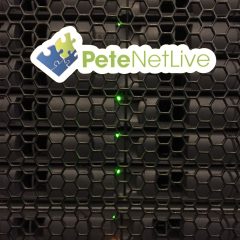In Place Upgrade of Window Server
In Place Upgrade KB ID 0001895 Problem An in-place upgrade of a Windows Server, where you update an existing server installation to a newer version without reinstalling from scratch, can be a powerful way to bring older infrastructure up to date without the lengthy process of rebuilding a system and restoring data. The allure of this method lies in its simplicity and time efficiency; theoretically, you can go from, say, Windows...
Copy Error 8×80070780
Error 8×80070780 KB ID 0001896 Problem This is a really strange one, when attempting to copy a file from a network location to another Windows server, I got this error. Error 0x80070780: the file cannot be accessed by the system Solution : Error 8×80070780 I did some searching, and got the usual annoying, run CHKDSK, reformat drives, one poster had even replaced the computer with another one! I came across one post that...
Setup up a Central ‘PolicyDefinitions’ Store (for ADMX files)
PolicyDefinitions KB ID 0001339 Problem We have had ADMX files for group policies for ages now, they are the successor to the older ADM files. They only really trip you up if you have something unusual to do, (like roll out LAPS, or Forefront, or Customising Office Deployments.) In most cases you will want to have a central store in your Windows domain, so the clients can see the ADMX files, (and ultimately enforce the policies...
VMware – Setting up ESX NTP Time Sync
ESX NTP KB ID 0000798 Problem Having your ESX Server running the correct time is quite important, and before you visit this subject, I would suggest you MAKE SURE the time is set in the ESX Servers BIOS, ie the internal clock is set correctly first. I’ve lost count of the amount of times I’ve seen Windows domains fall over because the ESX host has reverted to its BIOS time and replicated that time to its guests, suddenly your...
Windows – Setting Domain Time
Domain Time KB ID 0000112 Problem If you have arrived here, you have either noticed that the time is wrong on your server(s) or client PC(s), or you have looked in the event viewer and seen one of the following events being logged. Event ID’s 12, 22, 29, 36, 38, 47, and 50. Time Problem Events – On the PDC Emulator Event ID 12 (W32 Time Time Provider NtpClient: This machine is configured to use {text omitted}, but it is...





